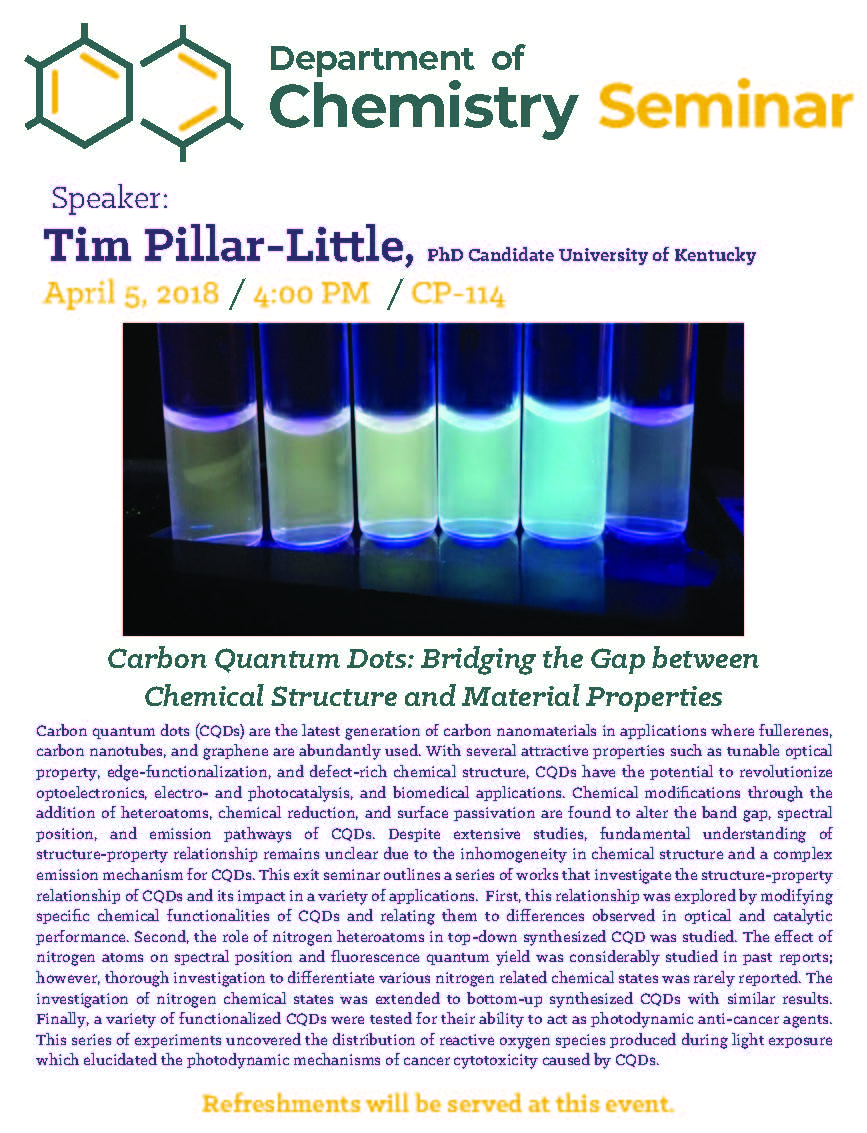----------
Tim Pillar-Little will be presenting his exit seminar, Carbon Quantum Dots: Bridging the Gap between Chemical Structure and Material Properties.
Abstract: Carbon quantum dots (CQDs) are the latest generation of carbon nanomaterials in applications where fullerenes, carbon nanotubes, and graphene are abundantly used. With several attractive properties such as tunable optical property, edge-functionalization, and defect-rich chemical structure, CQDs have the potential to revolutionize optoelectronics, electro- and photocatalysis, and biomedical applications. Chemical modifications through the addition of heteroatoms, chemical reduction, and surface passivation are found to alter the band gap, spectral position, and emission pathways of CQDs. Despite extensive studies, fundamental understanding of structure-property relationship remains unclear due to the inhomogeneity in chemical structure and a complex emission mechanism for CQDs. This exit seminar outlines a series of works that investigate the structure-property relationship of CQDs and its impact in a variety of applications. First, this relationship was explored by modifying specific chemical functionalities of CQDs and relating them to differences observed in optical and catalytic performance. Second, the role of nitrogen heteroatoms in top-down synthesized CQD was studied. The effect of nitrogen atoms on spectral position and fluorescence quantum yield was considerably studied in past reports; however, thorough investigation to differentiate various nitrogen related chemical states was rarely reported. The investigation of nitrogen chemical states was extended to bottom-up synthesized CQDs with similar results. Finally, a variety of functionalized CQDs were tested for their ability to act as photodynamic anti-cancer agents. This series of experiments uncovered the distribution of reactive oxygen species produced during light exposure which elucidated the photodynamic mechanisms of cancer cytotoxicity caused by CQDs.
Faculty Advisor: Doo-Young Kim

